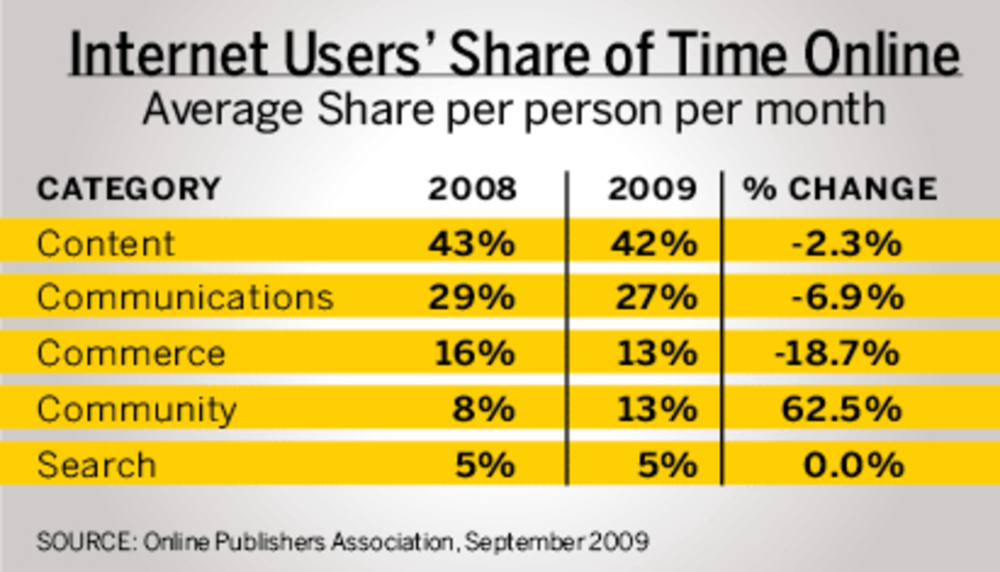Internet users spend the majority of their online time on content sites, according to the Online Publishers Association (OPA) in its Internet Activity Index, released September 17.
Using Nielsen//Netratings data, OPA found consumers spent an average of 6 hours, 58 minutes on content sites, while they spent about half of that time on community sites: 3 hours, 1 minute.
Consumers spent an average of 2 hours, 40 minutes a month on e-commerce sites; communications — e-mail and instant messaging — sites commanded 4 hours, 54 minutes; and search took up 57 minutes. Compared with 2008, time with content rose slightly, while communications, community and commerce slipped a small amount, and search jumped by a few minutes.
In terms of share of online time per category, people sent 42% of their time on content sites, down 2% compared with 2008. They spent 13% of their time on e-commerce sites, down 19% vs. 2008; and 13% of their time on community sites, up 63% compared with last year. Time spent on searches remained flat at 5%.
“Over time there has been a shift from communications to content, where content is commanding the majority of people’s time not only in share but in sheer volume of time spent,” said Pam Horan, president of OPA. “Communications decline has [also] come at the growth of community sites.”
The community category was introduced in 2008 because of the emergence and popularity of sites like Facebook, MySpace and LinkedIn. OPA has been tracking online activity in its index for six years and compiles data monthly.
E-commerce fell year to year in both time spent and share of users’ online time.
Accounting for that dip, Horan said the economy shares some blame, but consumers are also distracted by more online choices: “The sheer size of the pie got bigger,” she said.
Horan added that she sees this data as reflective of the marketing world at large, rather than online specifically, calling it a business issue rather than a platform issue. She said to acquire customers, these online stores need to be strategic about how they are wooing them.
“E-commerce companies should be thoughtful about the offers they are making as well as thinking about other ways to build the brand,” Horan said.








